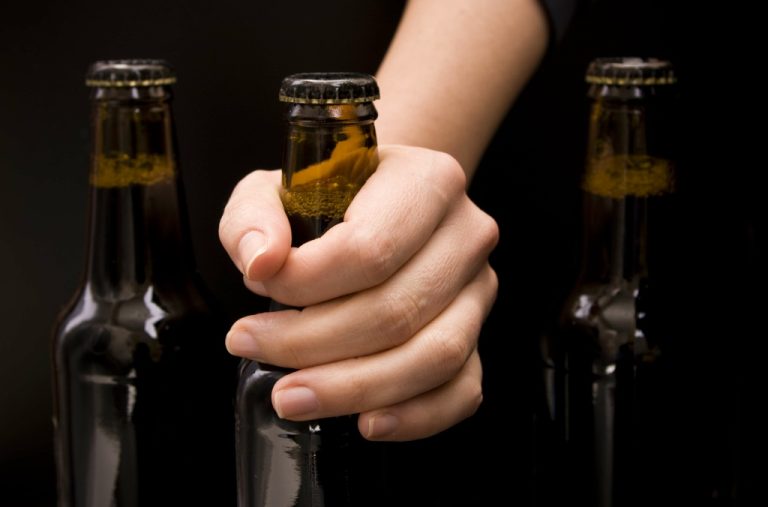Fentanyl‘s synthetic nature and availability make it a high-risk factor in the ongoing opioid epidemic. The potency, dose, and how a substance enters the bloodstream all influence addictiveness. Drugs that deliver fast spikes in dopamine, such as fentanyl, methamphetamine, and oxycodone, carry higher risk. Sedatives like benzodiazepines and barbiturates also disrupt GABA levels, causing sleep problems, confusion, and relapse.
RelapseRisk and Recovery Support
Additional signs and symptoms of alprazolam misuse include trouble sleeping, swelling of the hands or feet, and tremors. When consumed in high quantities, codeine-based cough syrup has a sedative effect. It provides the base for an illicit drug concoction known as “purple drank,” “sizzurp,” or “lean.” This concoction also contains soda and sometimes candy.
- People who abuse heroin in these ways and develop an addiction may have an increased chance of relapse (2).
- Fentanyl, a synthetic opioid 100 times stronger than morphine, is a significant contributor to fatal and nonfatal overdoses in the US.
- In a medical setting, methadone doses are carefully monitored and tapered to decrease withdrawal symptoms and to decrease the risk of developing an addiction.
- However, a couple more specific drugs included in the Dutch research were also taken into consideration.
Related Treatments
The addiction recovery and rehabilitation experts at Positive Sobriety Institute are standing by 24/7 to answer your questions about our addiction treatment and rehabilitation program. THC, the active ingredient of cannabis interacts with the brain’s endocannabinoid system. Extended exposure to THC reduces the brain’s sensitivity and natural dopamine production. Cannabis includes all products derived from the plants Cannabis sativa and Cannabis indica. More commonly known as Marijuana, it is often argued to be medicinal.
The most dangerous drug frequently involved in overdose deaths:
It can also be used to benefit those people who are not as affected by opioids. Heroin is an illegal opiate that is listed as a schedule 1 controlled substance. His expertise covers a broad of topics relating to addiction, rehab and recovery. Boris is an addiction therapist and assists in the alcohol detox and rehab process. Boris has been featured on a variety of websites, including the BBC, Verywell Mind and Healthline. Many drugs cause your brain to release excess dopamine, which is a chemical formed by your brain that makes you feel happy.
Cocaine: From Elation to Desperation
- Nicotine hijacks the reward system in our brain, and demands that we ingest more of it to feel satisfied.
- In 2017, the Department of Health and Human Services declared the level of opioid addiction a public health emergency, and it’s only gotten worse since then.
- In fact, according to the 2020 National Survey on Drug Abuse and Mental Health, nearly 140 million people reported drinking alcohol in the last month.
- Benzodiazepines are used for the treatment of anxiety and include several drugs, such as Xanax®, Valium®, and Klonopin®.
Among people aged 12 or older, roughly 20.7% (or 57.3 million) reported using wither tobacco products or nicotine vaping devices in the last 30 days. If you think you or marijuana addiction a loved one are at risk of a substance use disorder, have an honest conversation with a healthcare provider. Certain medications can help you relax after surgery if you’re in a lot of pain or manage an underlying chronic health condition.

Addiction Tier List: Ranking Substances by Their Impact and Addictive Potential

A large quantity of dopamine accumulates between neurons (within the synaptic cleft) when a person smokes crack or uses cocaine. Upon accumulation of dopamine between synapses, this transient dopaminergic spike allows the user to feel an extreme sense of pleasure, focused, and stimulated. The high that is obtained from smoking isn’t typically long lasting (10 to 15 minutes) compared to that of snorting (20 to 30 minutes). Heroin also crosses the blood-brain barrier rapidly and binds to the mu-opioid receptors. It is the binding to these receptors that leads a person to feeling significant amounts of euphoria. In addition to inducing extreme euphoria and acting as an anxiolytic, it also acts as an analgesic, providing a significant degree of pain relief.
Moving down our tier list, we encounter substances that, while perhaps not as immediately devastating as those in Tier S, still pose a significant addiction risk. These are the sneaky seducers – drugs that might seem less harmful at first glance most addictive drug but can still lead users down a dangerous path. Cannabis affects dopamine and GABA pathways, causing relaxation and altered cognition.
Mythomania Symptoms, Causes and Treatment
These drugs also lead to risky behaviors and damage to heart health. Missouri Behavioral Health offers outpatient treatment programs that help individuals manage stimulant addiction and rebuild healthy routines. The use of Ketamine as an anesthetic in both human and veterinary practice can induce a sensation of complete detachment that is similar to a near-death experience. High doses of Ketamine can have severe health consequences, including impaired memory, impaired motor function, high blood pressure, and potentially fatal breathing problems. It is dangerous to use Ketamine recreationally, and the risk of overdose increases significantly when it is combined with other drugs such as Opiates or Amphetamines.

FAQs About the Most Commonly Abused Drugs in the U.S.
Serious health complications in users include collapsed veins, damaged tissue, infected heart lining, and more. According to the CDC, the number of https://beachtennisturquoise.com.br/dear-alcohol-this-is-why-i-said-goodbye-to-you-a/ heroin users has more than doubled; approximately 80% of new users are coming to heroin after having abused prescription Opioids. Due to heroin’s high potency and high risk of addiction, recreational use of the substance can quickly turn into dependency, with heroin withdrawal beginning after roughly 6 to 12 hours.

